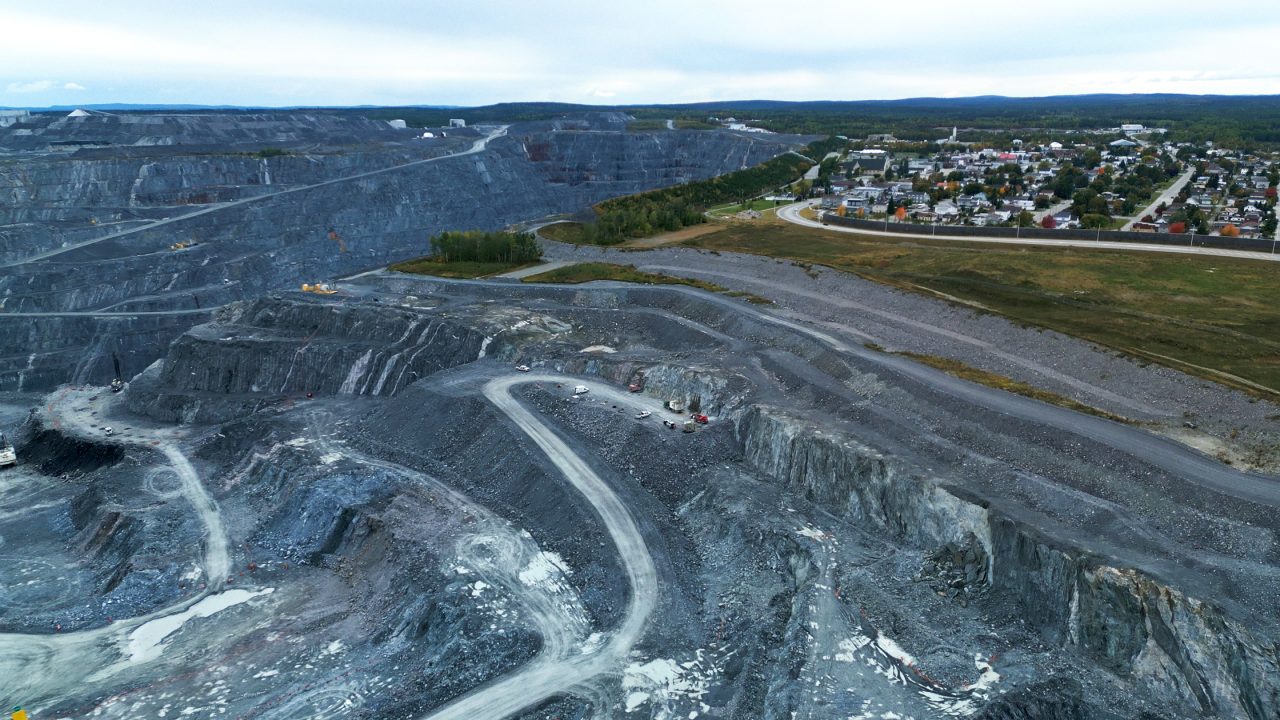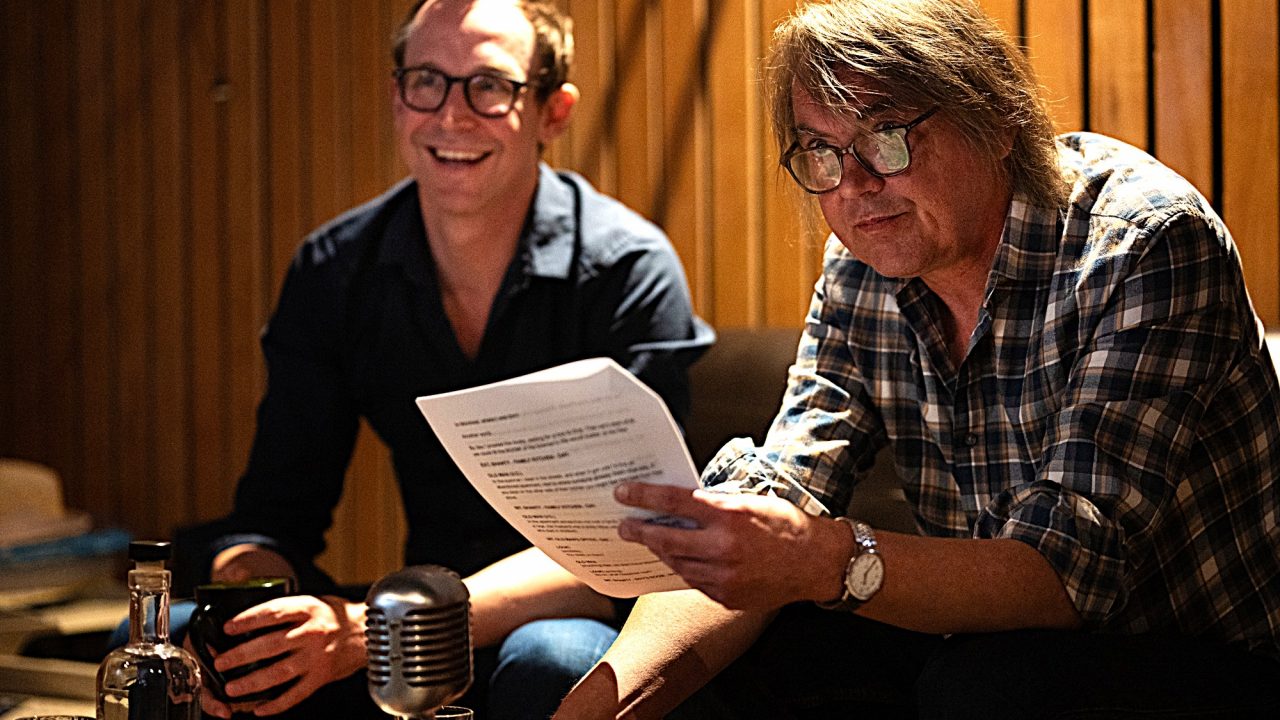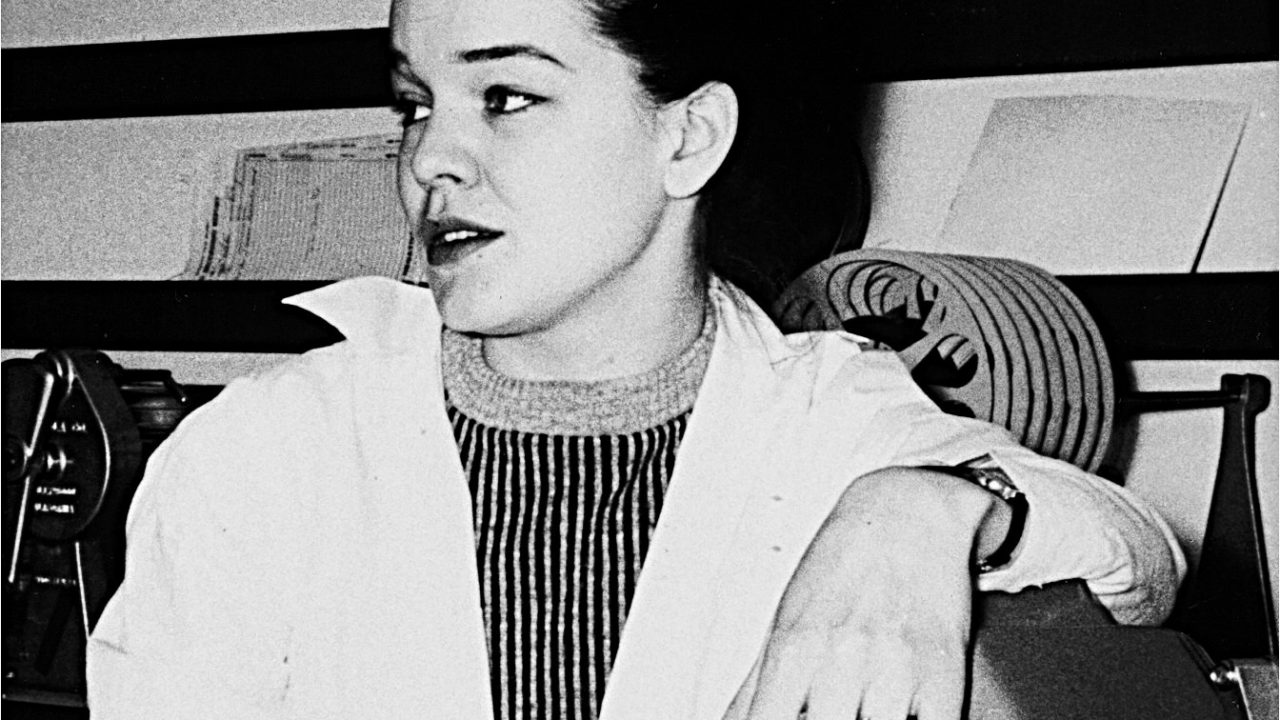
Malartic: The Story of a Mine | Curator’s Perspective
Malartic: The Story of a Mine | Curator’s Perspective
A dozen years after making an initial feature-length documentary about the start of a mining project in Malartic (The Golden Rule, 2011), filmmaker Nicolas Paquet returned to the small Abitibi town—one of whose neighbourhoods has been wiped off the map and replaced by a massive, gaping open-pit gold mine—to shoot his follow-up, Malartic (2024). Where his first film focused on the uproar resulting from the project announcement and promises of a brighter future for the town and its people, touted by the mayor at the time, in this second doc Paquet finds that the hoped-for economic miracle was merely an illusion.
Malartic, Nicolas Paquet, provided by the National Film Board of Canada
The mirage
In the film we learn that since the mine opened, Malartic has lost many of its stores, and poverty continues to be a problem. Its residents haven’t been receiving their fair share of the wealth generated by the Osisko project, which has earned $10 billion over the past 10 years.[1] The town is also reckoning with toxic gas emissions, dangerous blasting operations that hurl rocky debris close to homes and stores, noise pollution and mountains of mining residue surrounding the mine crater. Its people are polarized. Some decry the economic injustices and disastrous environmental impacts of the mine. Others stay silent, satisfied with the high-paying jobs provided by the mining company. There’s no end in sight to that social divide, in a context in which the Quebec Environment Ministry often acts in collusion with mining companies and fails to penalize violations, and the legal avenues for citizens seeking reparations are extremely limited, if they exist at all.
The issues raised by Paquet’s film are wide-ranging and complex. To help you better understand some of them, this blog post will discuss three NFB films about mining.
A hole story, a true story
For anyone wanting to know more about the long, sobering history of mining in Quebec and Ontario, and the tragic stories of miners, Robert Monderie and Richard Desjardins’ The Hole Story (2011) is a must-watch. Using archival footage, some never-before-seen photos, and interviews with historians, politicians, labour leaders and contemporary miners, this feature-length documentary, written and narrated by Desjardins, takes us on a deep dive. With his characteristic verve, the singer-songwriter turned filmmaker explains how Canadian and foreign mining companies appropriated and exploited the country’s natural resources, without ever paying royalties to the government, spending very little in the way of taxes and failing to redistribute the resulting wealth. He covers the exploitation of the workers, the struggles they’ve faced and their appalling, dangerous working conditions. In starkly compelling images, he depicts the environmental ruin left behind by the mining companies after they shut down their operations. And he highlights the historical complicity of governments, which never attempted to regulate, monitor or tax the exploitation of the country’s natural resources. The film’s last stop is in Malartic, where Desjardins meets residents worried about the impending opening of the mine there, while the mayor extols the economic benefits of the project. The sequence presages the documentary that Nicolas Paquet would make a dozen years later.
The Hole Story, Richard Desjardins & Robert Monderie, provided by the National Film Board of Canada
A lopsided struggle
As mentioned earlier, Malartic explores issues such as the imbalance of power between the mining company and the town’s residents, whose peace and quality of life have been impacted by the presence of the mine, and who want to exercise their rights. It’s an utterly lopsided battle, as they struggle with limited means to defend themselves as best they can against an extremely wealthy company that can afford the best lawyers. Too often, the battle is lost before it even begins, with the plaintiffs reduced to negotiating out-of-court settlements with the company. As lawyer Anne-Marie Voisard puts it: “To be a mere citizen, sitting face to face with a commercial enterprise of this scale, out of court, being left to negotiate directly with them, to negotiate the conditions of your surrender… That situation amounts to a failure of the law.”[2]
That unequal struggle against the mining companies, that twisted power dynamic, that “failure of the law,” as the lawyer quoted above puts it, are all perfectly illustrated in Julien Fréchette’s excellent, hard-hitting documentary Silence Is Gold (2012). It chronicles the legal battle between mining companies Barrick Gold and Banro and Alain Deneault, a philosopher and the author of the highly critical book Noir Canada, about those companies’ practices in Africa. Shortly after the book was published in 2008, Barrick Gold and Banro launched a multi-million-dollar defamation claim. The legal proceedings escalated over several years, with the publisher, Écosociété—also named in the lawsuit—eventually forced to withdraw the book from circulation. The film underscores the powerlessness of ordinary people against the wealthy, but above all reveals the limits of freedom of expression in a democratic country like Canada.
Silence Is Gold, Julien Fréchette, provided by the National Film Board of Canada
Life in a small town
You may ask, “But why would a town agree to a mining project under these circumstances?” As Nicolas Paquet explained in an interview with newspaper Le Devoir when his film was released: “When the mine project was announced, a second mine project, the economy in Malartic was in the doldrums, and [the announcement] was well received.”[3] The mayor of Murdochville, who’s seen near the end of Malartic, makes the same argument. In short, the creation of a mine and a hundred or so well-paying jobs is often the only chance for a small regional town to emerge from economic stagnation. In that sense, the problem may not be the mining operation so much as the way things are done. Townspeople tend to be attached to their town. They want to live, work and spend the rest of their lives there.
Last train out of Schefferville
The dream of a better economic future for a remote regional town that relies on a single industry, mining, and its residents’ fondness for their part of the country are brilliantly depicted in the feature The Last Glacier (1984), directed by Roger Frappier and Jacques Leduc. A skillful blend of documentary and fiction, the film tells the true story of the miners of Schefferville. On November 2, 1982, the Iron Ore Company of Canada (IOC)—led by one Brian Mulroney—announces that it’s closing its mine in Schefferville, in northeastern Quebec. The steel market is in freefall. Iron ore is no longer selling. It’s a harsh blow. When the mine shuts down, so will the town.
Interspersed with accounts from real IOC workers and young people who’ve never known anything but their lives in Schefferville, as well as scenes of residents who plan to stay behind and others who decide to leave, the film depicts the breakup of fictional couple Raoul and Carmen. He wants to leave and rebuild his life in Sherbrooke, the city he left 10 years earlier; she wants to stay, with their son, Benoît. The filmmakers’ treatment gives the fictional scenes—featuring actors Robert Gravel, Louise Laprade, Martin Dumont and Michel Rivard (also a celebrated singer-songwriter who performs the film’s theme song, “Schefferville, le dernier train”)—such a sense of realness that the line between fiction and documentary is completely blurred. At the same time, it lends the documentary scenes a dramatic dimension: the audience imagines that, behind the true-life testimonials, dramas just like the ones experienced by Raoul, Carmen and Benoît are playing out.
The Last Glacier, Roger Frappier & Jacques Leduc, provided by the National Film Board of Canada
All that’s left is for me to remind you not to miss Malartic, now streaming for free on nfb.ca.
And check out The Hole Story, Silence Is Gold and The Last Glacier, which will certainly provide you with plenty of food for thought about mines and mining.
[1]. This amount was calculated by the filmmaker, Nicolas Paquet.
[2]. Quote from Nicolas Paquet’s film Malartic (2024), a production of the National Film Board of Canada and franC doc films (bis).
[3]. Montpetit, Caroline. “Malartic: à qui profite la mine?” Le Devoir, February 27, 2024.



